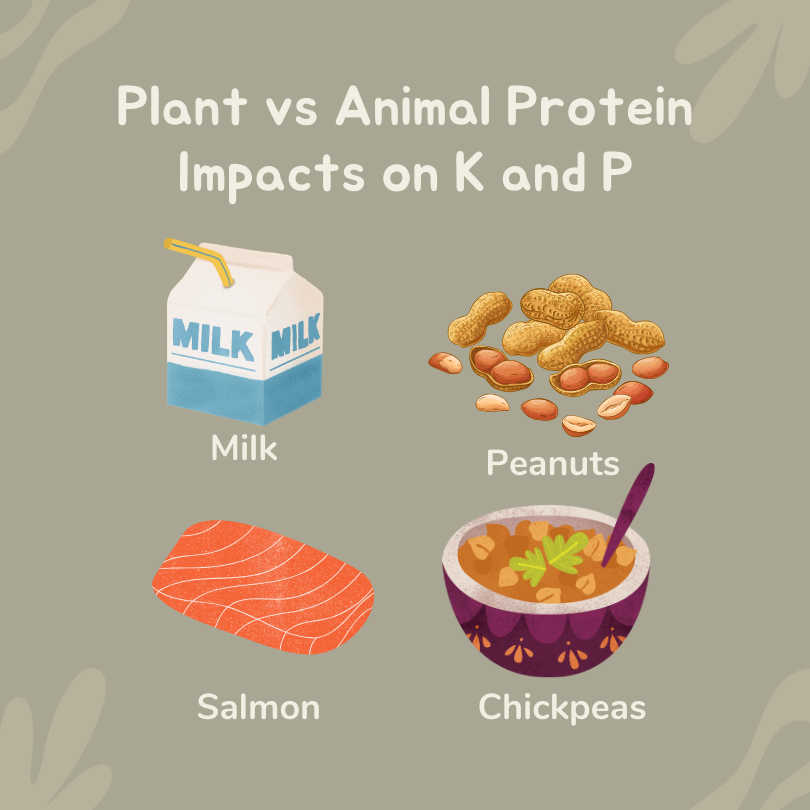This is the follow up to my previous post looking at potassium peaks after meals. Today, I am focusing on a slightly different aspect of the same article. The focus of today’s post is how the foods offered impacted the phosphorus and potassium levels in the blood.
Quick Recap
In case you aren’t reading these two posts back to back, here is a quick recap. This study was a feeding study conducted in 8 people who are on dialysis. The researchers gave people a light breakfast and then they came to the hospital to eat a large main meal. The participants stayed at the hospital for four hours and had blood samples taken hourly. The participants then went home and ate the light dinner that was provided. The next morning they came for dialysis and their blood was sampled again. Each participant did this twice and ate two different meals as the main meal.
What foods were offered?
The standard diet focused more heavily on animal proteins as the main daily source of protein in the diet. The modified diet reduced the animal proteins and incorporated sources of whole grains, nuts and legumes. See the table 1 below.

What did participants actually eat?
The researchers measured how much food the participants actually ate. You can see in the figures below that many people did not eat 100% of the offered food. Though every ate about 30-35g of protein, 500-700mg of phosphorus and 1000-1200mg of potassium.

What happened to the potassium levels?
The potassium peaks about 3 hours after the standard meal. The modified meal (more plant-based) does not cause the same peak, despite containing relatively similar amounts of potassium.

What happened to the phosphate levels?
Neither meal caused a post-prandial peak. The authors reported that the modified (more plant-based) diet appeared to lower serum phosphorus levels at hours 3 and 4 compared to the standard diet. You can see that in graph. Notice that the red line is below the black line for 7 out of the 8 participants. As a clinician, I am not sure how important this difference is, since the red and black lines are often quite close together.

In the discussion section, the authors go over several other studies that have reported similar results. That phosphorus seldom appears to have a post-prandial rise in relation to food intake and that fasting phosphorus levels are poor indicators of phosphorus load.
Summary
In this small feeding study, researchers measured potassium and phosphorus levels after participants ate two different meals. The meal with more plant-based proteins (chickpeas and peanuts) slightly lowered serum phosphorus levels (though the clinical significance is uncertain). The meal containing more animal based protein demonstrated a clear potassium peak at 3 hours, though this resolved and had little bearing on the pre-dialysis potassium level.
Take Aways
- Phosphorus intake does not clearly cause a post-prandial peak. When assessing intake and serum phosphate levels, it may be more important to consider total dietary load rather than what was eaten immediately before the lab draw.
- Potassium intake from more bioavailable sources appears to cause a post-prandial peak at 3 hours, followed by a decline in serum levels. This suggests asking patients what they ate prior to the lab draw is important in a hyperkalemia assessment. It also suggests that what someone ate two weeks, may not have a significant impact on the potassium result.



